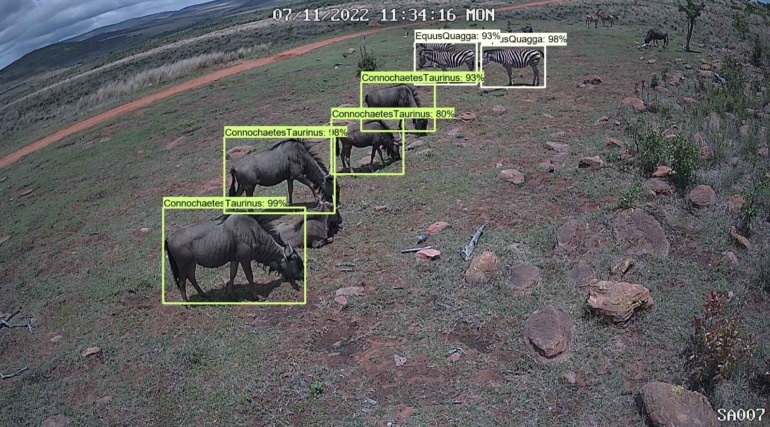TL;DR:
- AI is increasingly vital for monitoring biodiversity and protecting endangered species.
- UN’s goal: Safeguard 30% of Earth’s land and oceans by 2030.
- AI efficiently analyzes real-world data without ecosystem disruption.
- Conservation AI in the UK pioneers AI technology for ecology projects.
- AI identifies wildlife through video, audio, and image analysis.
- AI accelerates comprehensive species identification in tropical regions.
- Conservation AI’s models detect millions of individual animal appearances.
- AI models help understand the impact of human activities on ecosystems.
- AI offers hypothesis-free, data-driven insights with high accuracy.
- Environmental impact assessment is crucial in AI risk management.
Main AI News:
In today’s rapidly changing world, the protection of endangered species has become a critical global mission. The United Nations, recognizing the urgency of the situation, set a bold goal in 2020 to safeguard at least 30% of Earth’s land and oceans by the end of the decade. However, achieving this goal requires innovative solutions that can efficiently monitor and protect biodiversity without disrupting ecosystems or draining valuable time and resources.
Enter artificial intelligence (AI), a game-changer in the field of conservation. AI offers the potential to swiftly and effectively analyze vast amounts of real-world data, making it a powerful tool in the fight to save endangered species. Researchers worldwide are increasingly turning to AI to bolster their efforts and meet the UN’s ambitious targets.
Carl Chalmers, a machine learning expert at Conservation AI, a UK-based non-profit organization, emphasizes the significance of AI in this context. He states, “Without AI, we’re never going to achieve the UN’s targets for protecting endangered species.” Conservation AI is at the forefront of harnessing AI technology for ecology projects, demonstrating its potential to revolutionize conservation efforts.
One of the key advantages of AI in conservation is its ability to analyze data from various sources, such as video footage and audio recordings, to identify and track wildlife. For instance, ecologist Jörg Müller and his team at the University of Würzburg, Germany, have successfully employed AI to quantify biodiversity in tropical forests by identifying animal species through audio recordings. Their groundbreaking study, published in Nature Communications, highlights how AI can help experts identify numerous bird, amphibian, and mammalian species, paving the way for more comprehensive species identification in tropical regions.
Conservation AI has also developed models that can automatically analyze images and video footage from drones and camera traps, enabling the identification and tracking of wildlife, including critically endangered species. This technology has already detected millions of individual animal appearances across various species, from pangolins in Uganda to orangutans in Malaysia, facilitating rapid response to threats like poaching and fires.
Beyond real-time monitoring, AI can be used to model the impacts of human activities on ecosystems and reconstruct historical changes. Researchers at the University of Birmingham, UK, have utilized AI to understand how a century’s worth of environmental degradation in a freshwater ecosystem has led to biodiversity loss. Their model, which combines genetic material, climate data, and pollution information, highlights the key drivers of biodiversity loss, including insecticides, fungicides, extreme temperature events, and precipitation.
What sets AI apart is its ability to be hypothesis-free and data-driven, providing insights and predictions with unprecedented accuracy. As Luisa Orsini, an expert in evolutionary biosystems, notes, “AI ‘learns’ from past data and predicts future trends in biodiversity with higher accuracy than ever achieved before.“
While AI holds immense promise for conservation, it’s important to be mindful of its environmental impact. As Nicolas Miailhe, founder of The Future Society, warns, AI consumes computing power and material resources, which can have adverse effects on ecosystems. Therefore, it is crucial to prioritize environmental impact assessments in AI risk management.
Conclusion:
AI’s role in preserving endangered species cannot be overstated. It offers a beacon of hope in our mission to protect Earth’s biodiversity and achieve the UN’s ambitious goals. By harnessing the power of AI, we can revolutionize conservation efforts and secure a brighter future for our planet’s most vulnerable species.

